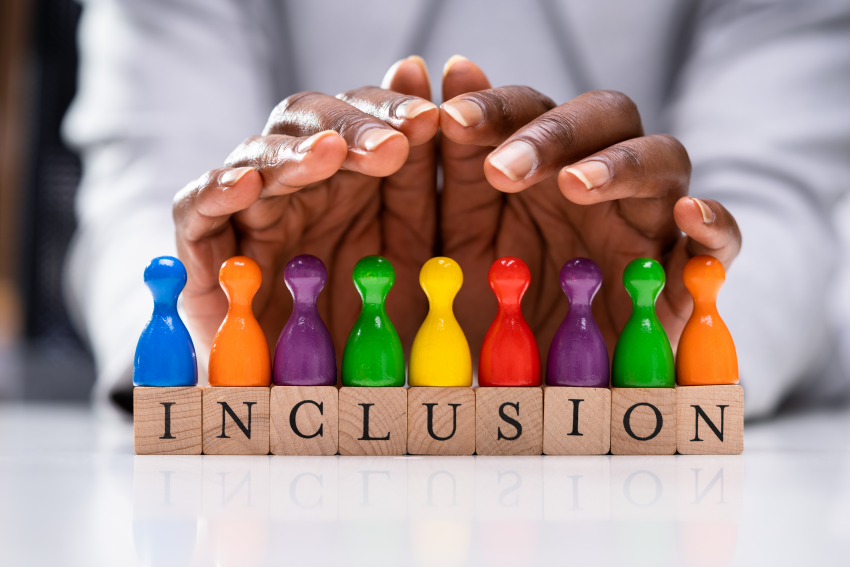In today’s fast-paced business world, it is essential to have a diverse and inclusive workplace.
The power of diversity and inclusion in leadership cannot be overstated, as it creates an environment where employees feel valued and respected, leading to increased productivity and employee engagement.

According to a study by McKinsey & Company, companies that have diverse executive teams are 33% more likely to outperform their competitors. However, diversity without inclusion can have the opposite effect. Inclusion is the best way to create diversity, and inclusive leadership is essential for any business’s growth.
Defining diversity and inclusion in leadership
Before diving deeper into the topic, it is crucial to understand what Diversity and Inclusion in Leadership mean. Diversity refers to the differences in people’s backgrounds, experiences, and characteristics, such as gender, race, age, religion, and sexual orientation.
On the other hand, Inclusion refers to the active and intentional creation of a culture where everyone feels welcome, valued, and respected, regardless of their differences. Inclusive leaders create an environment where people can bring their whole selves to work and feel comfortable expressing their opinions and ideas.
The benefits of diversity and inclusion in leadership
Diversity and inclusion in leadership offer numerous benefits to businesses, such as:
1. Increased innovation and creativity:
Diverse teams have different experiences and perspectives, leading to more innovative and creative solutions. Inclusive leadership enables individuals to express their unique ideas, leading to a more diverse range of concepts.
2. Improved employee engagement and retention:
Employees feel valued and appreciated in an inclusive workplace, leading to increased engagement and reduced turnover rates. An inclusive culture promotes a sense of belonging, leading to a more productive workforce.
3. Improved decision-making:
Inclusive leaders seek out diverse perspectives and opinions, leading to better decision-making. A team with varied experiences and backgrounds can consider different angles when approaching problems and opportunities.
4. Enhanced reputation and customer base:
A business that values diversity and inclusion in leadership has a positive reputation among customers and potential employees. Consumers are more likely to support companies that align with their values, leading to increased revenue and growth.

Learn more about why diversity, inclusion and belonging are crucial to the success of your company.
The role of inclusive leadership in diversity and inclusion
Inclusive leadership is essential in creating a diverse and inclusive workplace. It requires leaders to be intentional about creating a culture where everyone feels welcome and valued, regardless of their differences.
Inclusive leaders actively seek out diverse perspectives, opinions, and experiences, and encourage employees to share their ideas. They create an environment where people feel comfortable expressing their opinions and views, leading to increased engagement and productivity.
According to Magdalena Rogl, a Diversity and Inclusion Manager at Microsoft, “Inclusive leadership means that every employee is seen, heard, and valued for their unique perspective and contributions. It is essential to create a culture of belonging, where employees feel safe to be themselves and bring their whole selves to work.”
The characteristics of an inclusive leader
To be an inclusive leader, individuals must possess specific traits, such as:
- Self-awareness
Inclusive leaders are aware of their biases and actively work to address them. They understand their own privilege and are committed to creating a culture of equality and fairness.
- Open-mindedness
Inclusive leaders are open-minded and curious, seeking out diverse perspectives and experiences. They listen actively and create an environment where everyone feels comfortable sharing their opinions.
- Empathy
Inclusive leaders are empathetic and understand the experiences and challenges of people from different backgrounds. They create a culture of respect and appreciation for diversity, leading to a more inclusive workplace.
- Courage
Inclusive leaders are courageous and willing to challenge the status quo. They are not afraid to speak up and address issues of inequality and discrimination.
Steps to building an inclusive culture
Building an inclusive culture requires deliberate and sustained effort. Here are some steps that businesses can take to create a diverse and inclusive workplace:
- Start at the top
Inclusive leadership must start at the top. Executives and senior leaders must be committed to creating a culture of inclusion, and they must lead by example. They must actively seek out diverse perspectives and experiences and be willing to challenge their own biases.
- Develop a diversity and inclusion strategy
Businesses must develop a comprehensive diversity and inclusion strategy that outlines their commitment to diversity, sets measurable goals and objectives, and establishes a plan to achieve them. The strategy should include initiatives such as training, mentorship, and employee resource groups.
- Provide diversity and inclusion training
Training is an essential component of any Diversity and Inclusion Strategy. It provides employees with the tools and knowledge to be more inclusive and understanding of others. Training should be provided to all employees, including leaders and executives.
- Establish employee resource groups
Employee resource groups (ERGs) provide a safe space for employees to connect and share their experiences. ERGs are a valuable tool for promoting diversity and inclusion in the workplace. They can also provide feedback to leaders on how to make the workplace more inclusive.
- Review hiring practices
Businesses must review their hiring practices to ensure they are inclusive and fair. They must eliminate any biases in the hiring process and ensure that all candidates are evaluated based on their skills and experiences.
- Foster a culture of inclusion
Creating a culture of inclusion requires a deliberate effort to promote respect, empathy, and understanding. Leaders must foster an environment where employees feel comfortable expressing their opinions and ideas. Celebrating diversity and promoting an inclusive culture should be part of the company’s core values.
Diversity and inclusion as essential parts of business
The power of diversity and Inclusion in Leadership cannot be understated. An inclusive workplace promotes productivity, employee engagement, and innovation. Inclusive leaders create a culture of belonging, where employees feel valued and appreciated regardless of their differences.
Businesses must recognize that diversity and inclusion in leadership are not just good for employees but also for the bottom line. It is essential to develop a comprehensive Diversity and Inclusion Strategy, provide training, establish ERGs, and foster a culture of inclusion to create a more diverse and inclusive workplace.
As Carmen Morris, a Forbes contributor, notes, “Creating an inclusive leadership culture takes time and effort. It requires leaders to be intentional about their actions and decisions. However, the rewards are worth the effort.”

Diversity and inclusion as essential parts of business
The power of diversity and Inclusion in Leadership cannot be understated. An inclusive workplace promotes productivity, employee engagement, and innovation. Inclusive leaders create a culture of belonging, where employees feel valued and appreciated regardless of their differences.
Businesses must recognize that diversity and inclusion in leadership are not just good for employees but also for the bottom line. It is essential to develop a comprehensive Diversity and Inclusion Strategy, provide training, establish ERGs, and foster a culture of inclusion to create a more diverse and inclusive workplace.
As Carmen Morris, a Forbes contributor, notes, “Creating an inclusive leadership culture takes time and effort. It requires leaders to be intentional about their actions and decisions. However, the rewards are worth the effort.”


